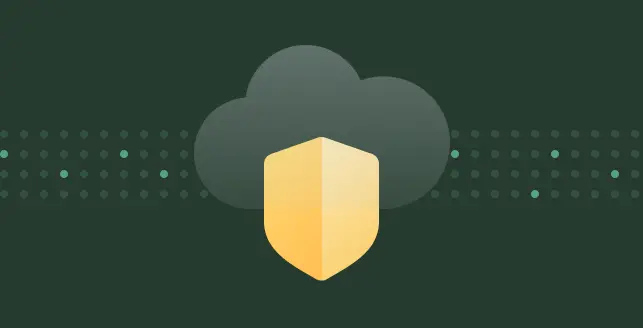
RC4 was first introduced by a group of security scientists (Nadhem AlFardan, Dan Bernstein, Kenny Paterson, Bertram Poettering and Jacob Schuldt). They found out that a new attack against TLS with RC4 encryption allowed an attacker to recover plaintext data from the TLS connection.
This attack was possible because of a flaw in the keystream generated by the RC4 algorithm. If the same plaintext is encrypted, again and again, it will leave traces. A remote attacker can perform a plaintext-recovery attack by sniffing the initial bytes of network traffic.
The RC4 algorithm can be implemented in both TLS and SSL protocol. The RC4 algorithm is vulnerable during the initialization phase when the algorithm does not properly combine state data with key data. The attacker can then use a brute-force attack using LSB values.
The RC4 algorithm, a stream cipher, has historically been used in various encryption protocols, including Transport Layer Security (TLS) and its predecessor, Secure Sockets Layer (SSL).
Here’s a detailed look at the role of RC4 in these contexts:
RC4 in SSL/TLS
1. Early adoption
- RC4 was initially favored for its speed and simplicity. When SSL was first developed by Netscape in the mid-1990s, RC4 was a popular choice due to its efficiency and ease of implementation.
2. Use in Cipher Suites
In the context of SSL and TLS, RC4 is employed as part of cipher suites. Cipher suites specify the algorithms for key exchange, bulk encryption, and message authentication. For instance, a cipher suite using RC4 might look like TLS_RSA_WITH_RC4_128_SHA, where:
TLS indicates the protocol.
RSA specifies the key exchange algorithm.
RC4_128 denotes the encryption algorithm (RC4 with a 128-bit key).
3. Security concerns
Biases and predictability: Over time, cryptographic research uncovered weaknesses in RC4. The algorithm exhibits certain biases in its keystream, meaning some output bytes are more likely than others. This predictability can be exploited in attacks.
Attacks on protocols: Practical attacks against RC4 in SSL/TLS have been demonstrated, such as the BEAST (Browser Exploit Against SSL/TLS) attack, which highlighted vulnerabilities in the way RC4 handles certain patterns of plaintext and ciphertext.
RC4-NOMORE: This attack showed that RC4 could be broken even in TLS if enough ciphertext is available. It forced many organizations and browsers to reconsider its usage.
4. Deprecation and phase-out
- Due to these vulnerabilities, major organizations and standards bodies have deprecated RC4 in SSL/TLS. The Internet Engineering Task Force (IETF) issued RFC 7465 in February 2015, formally prohibiting the use of RC4 in all versions of TLS due to its insecurity.
Impacts of the RC4 algorithm in Transport Layer Security and Secure Sockets Layer
1. Security vulnerabilities
Predictable key sream: Over time, researchers discovered biases in the RC4 keystream, which made certain outputs more predictable. This predictability undermines the algorithm’s security.
Known attacks:
BEAST attack: The Browser Exploit Against SSL/TLS (BEAST) attack exploited vulnerabilities in cipher block chaining (CBC) mode, leading some to temporarily favor RC4. However, RC4 itself was later found vulnerable.
RC4-NOMORE: This attack demonstrated that RC4 could be exploited even in TLS if enough ciphertext was available, making it feasible to recover parts of the plaintext.
2. Data breaches and security risks
Sensitive data exposure: Vulnerabilities in RC4 led to scenarios where encrypted data could potentially be decrypted by attackers. This increased the risk of data breaches and exposure of sensitive information, such as passwords, credit card numbers, and personal data.
Compliance issue: As security standards evolved, continued use of RC4 became a liability. Organizations needed to ensure compliance with updated security regulations and guidelines that deprecated insecure algorithms like RC4
3. Deprecation and transition costs
Updating systems: Phasing out RC4 required significant updates to systems and software. Organizations had to invest in upgrading their cryptographic libraries and ensuring compatibility with more secure algorithms.
Backward compatibility: Ensuring compatibility between new and old systems during the transition away from RC4 posed challenges. Some legacy systems still relied on RC4, complicating the move to more secure alternatives.
4. Impact on cryptographic practices
Shift to stronger algorithms: The deprecation of RC4 led to a broader industry shift towards stronger encryption algorithms like AES (Advanced Encryption Standard) and ChaCha20. These algorithms provide better security guarantees and are less susceptible to known attacks.
Increased focus on security: The vulnerabilities of RC4 highlighted the importance of continuous cryptographic research and the need for regular updates to cryptographic standards and practices.
Mitigation of the RC4 algorithm In Transport Layer Security and Secure Sockets Layer
To mitigate and take precautions against the use of the RC4 algorithm in Transport Layer Security (TLS) and Secure Sockets Layer (SSL), follow these guidelines:
1. Mitigation steps
Follow official standards and recommendations
Adhere to RFC 7465: It mandates the prohibition of RC4 cipher suites in all versions of TLS.
Update software: Update to the latest versions that comply with this RFC and other security guidelines.
2. Update and configure software
Web browsers: Ensure browsers are updated, as modern browsers do not support RC4.
Web servers: Update web servers and configure them to disable RC4 cipher suites.
Libraries and frameworks: Update cryptographic libraries like OpenSSL, GnuTLS, and others to versions that do not support RC4.
3. Use stronger cipher suites
Ensure that only strong, modern ciphers are enabled, such as AES-GCM and ChaCha20-Poly1305.
4. Force modern TLS versions
Disable older, less secure versions of TLS and SSL (e.g., SSLv2, SSLv3, TLS 1.0, and TLS 1.1) in favor of TLS 1.2 and TLS 1.3.





